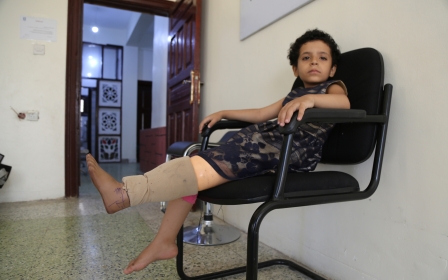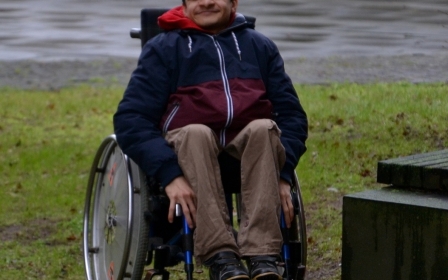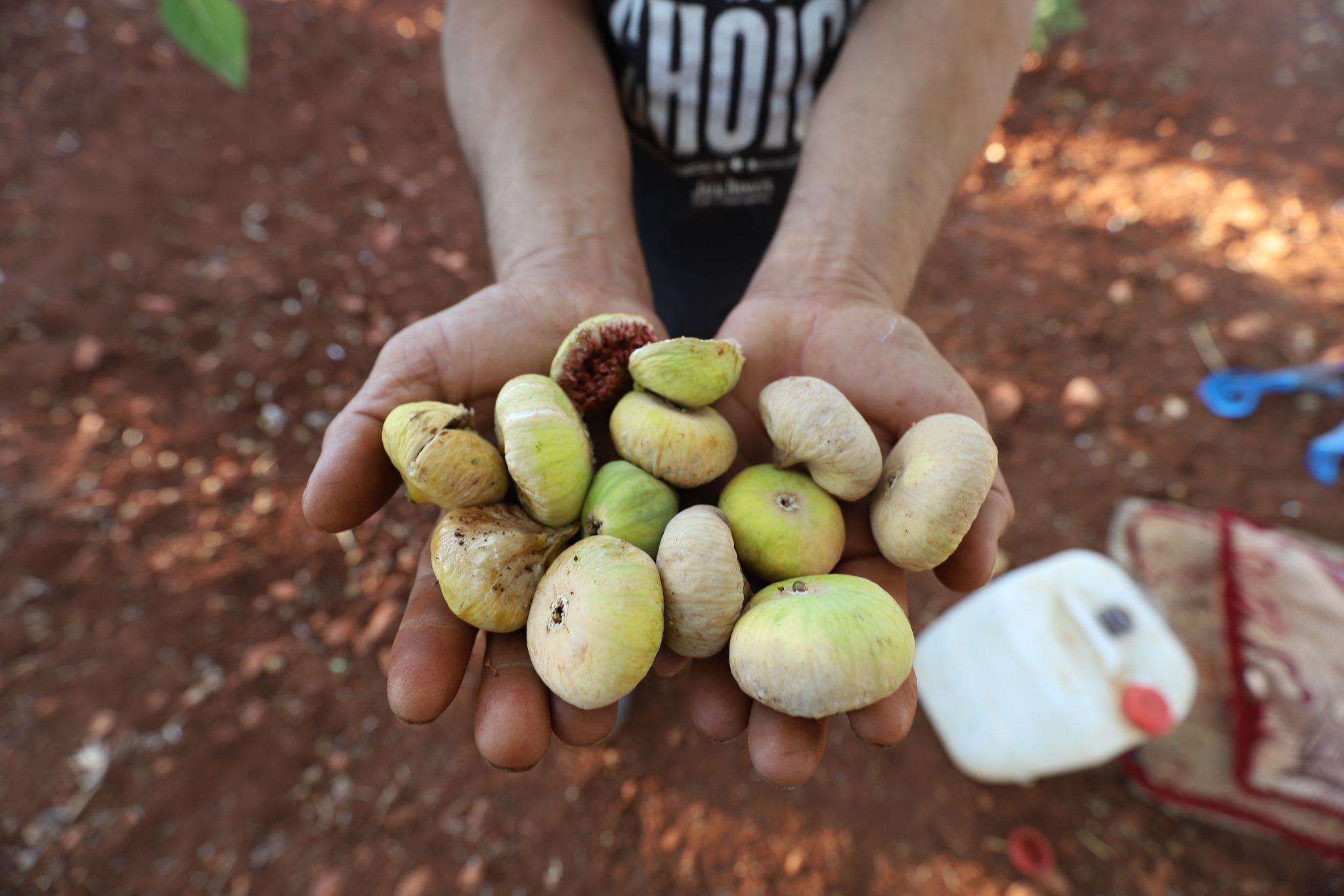
In pictures: Syrian fig harvester returns to work after losing leg to landmine

Shaker Ahmed al-Zaytoun, a 22-year-old man from the town of Al-Bara in the Jabal al-Zawiya region of the Idlib countryside, lost his leg last year when a landmine exploded as he was harvesting figs in his land, near the frontlines with Assad government forces. He is one of more than an estimated 86,000 people who have lost limbs in the decade-long conflict in Syria. (All photos by Abdulaziz Ketaz)
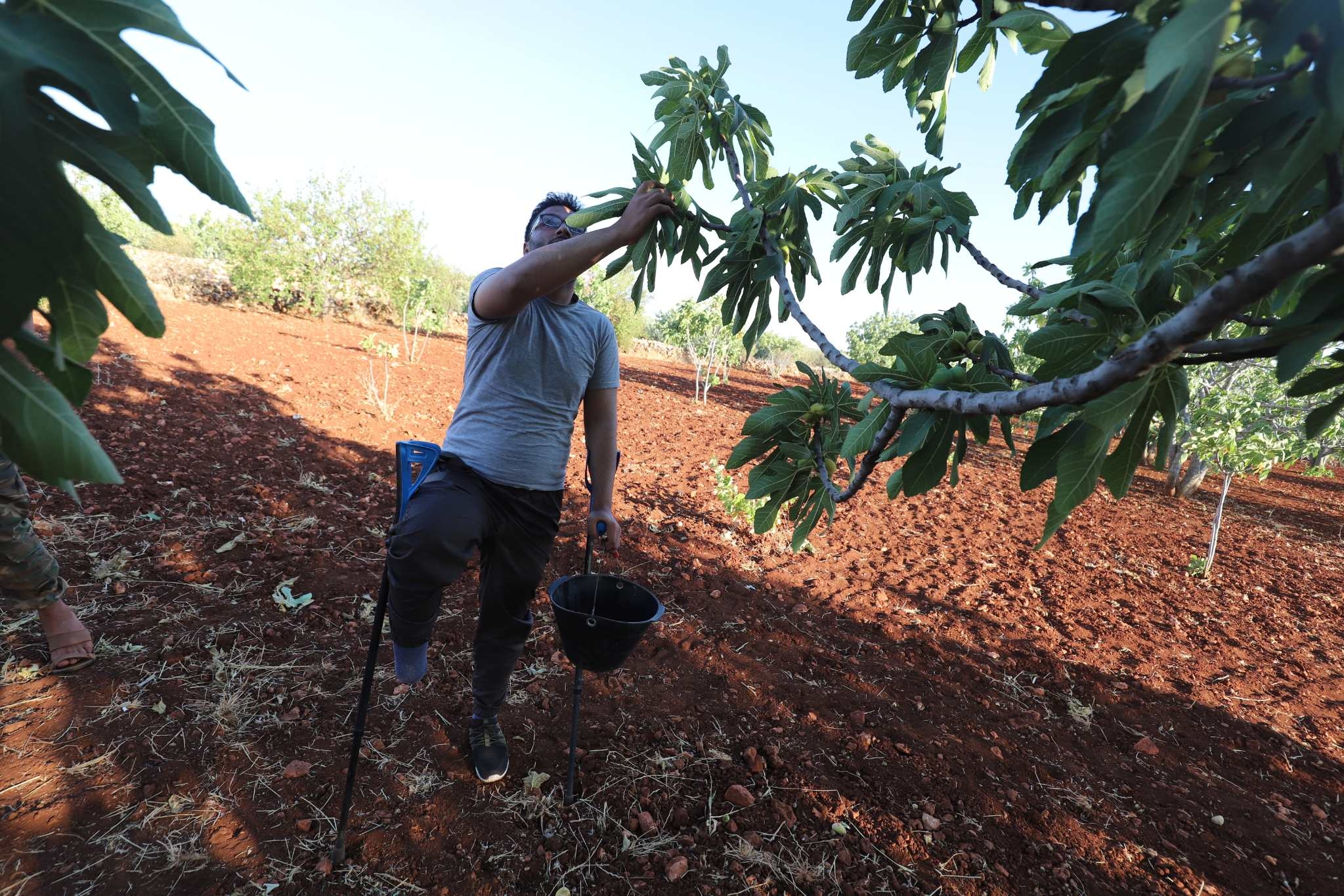
Starting early in the morning, al-Zaytoun heads to the farm and begins to shake the branches of the trees. Only the dry figs drop to the ground, which are ready for harvesting. The villages of Jabal al-Zawiya and the southern countryside of Idlib are famous for the cultivation of figs, which represents the main source of income for the locals.
The area is known for the production of expensive dried figs, which are known for their health benefits, being an excellent source of dietary fibre, and packed with vitamins and minerals.

To thrive, figs need mild winters and well-drained soil, and it can take four or five years for the trees to produce a crop. Figs tend to be grown in all the villages of Jabal al-Zawiya because of the crop's low maintenance requirements, from irrigation to pesticide spraying and pruning.
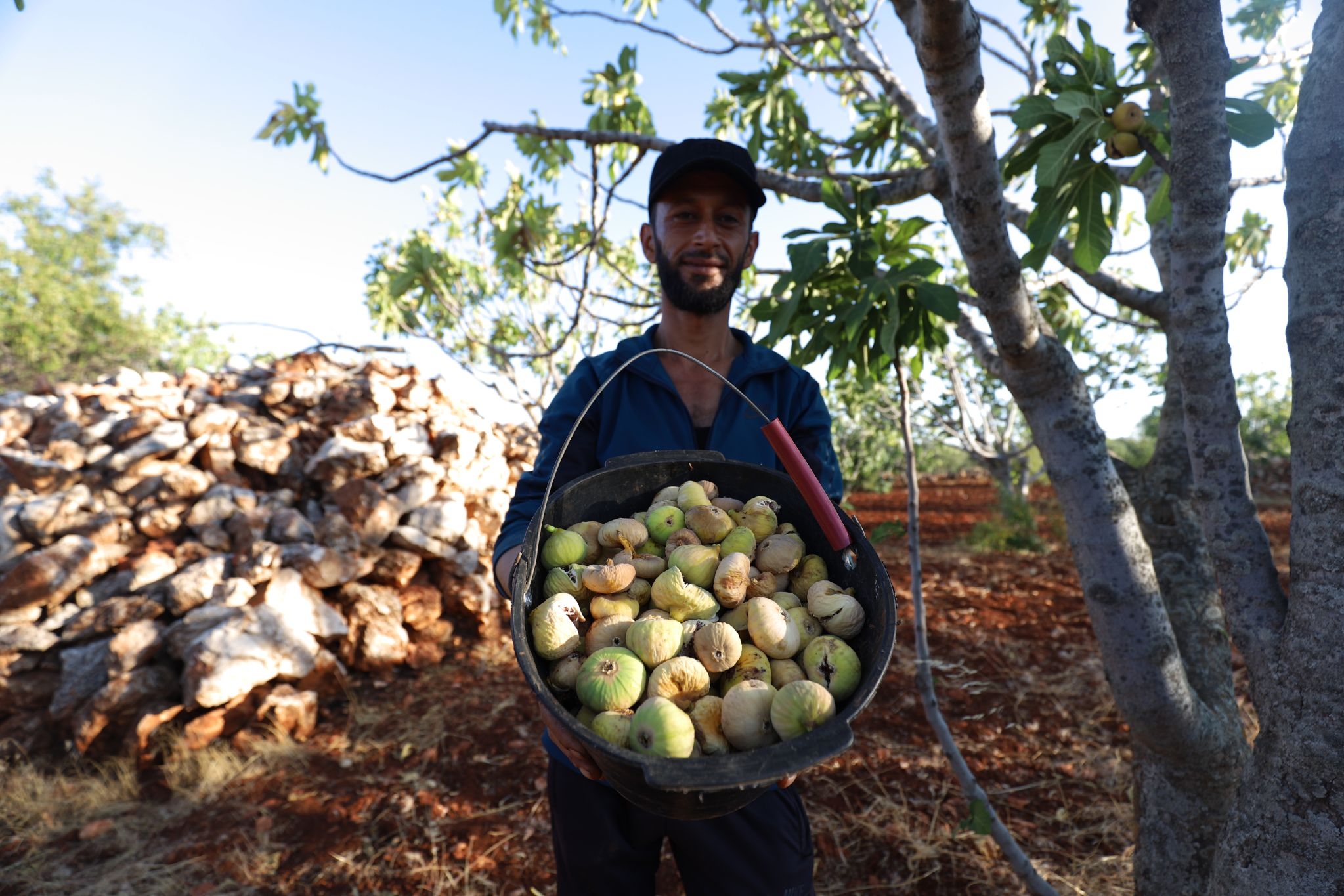
Farming was disrupted by the 11-month military offensive, launched in April 2019 by the Syrian government and Russian forces who would eventually take control of hundreds of towns and villages in and around Idlib, including swathes of agricultural land. Faced with deteriorating living conditions, many of those displaced during the fighting, including al-Zaytoun, decided to return to their lands despite the ongoing threat of bombardment.
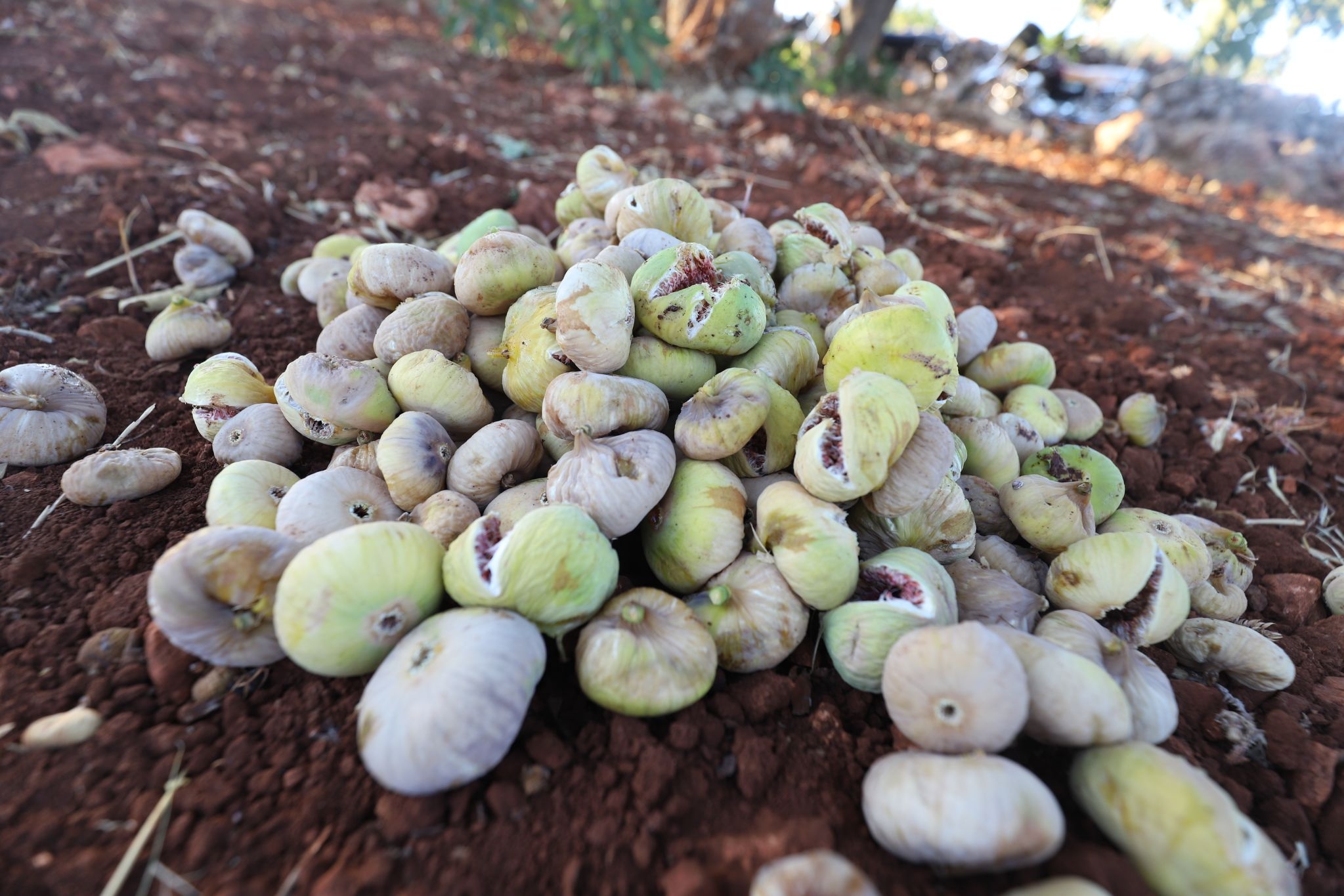
With the approach of the fig harvest this year, and while recovering from his leg amputation, he invested in some farming land in the village of al-Bara in Jabal al-Zawiya, in order to prepare the figs for harvest.
“One of my relatives owns the land I invested in, but is too frightened to go there because it's on the frontline with Assad regime forces," al-Zaytoun tells Middle East Eye. "I have to work on it despite the risks, because of our poor living conditions and so that I can earn a living."
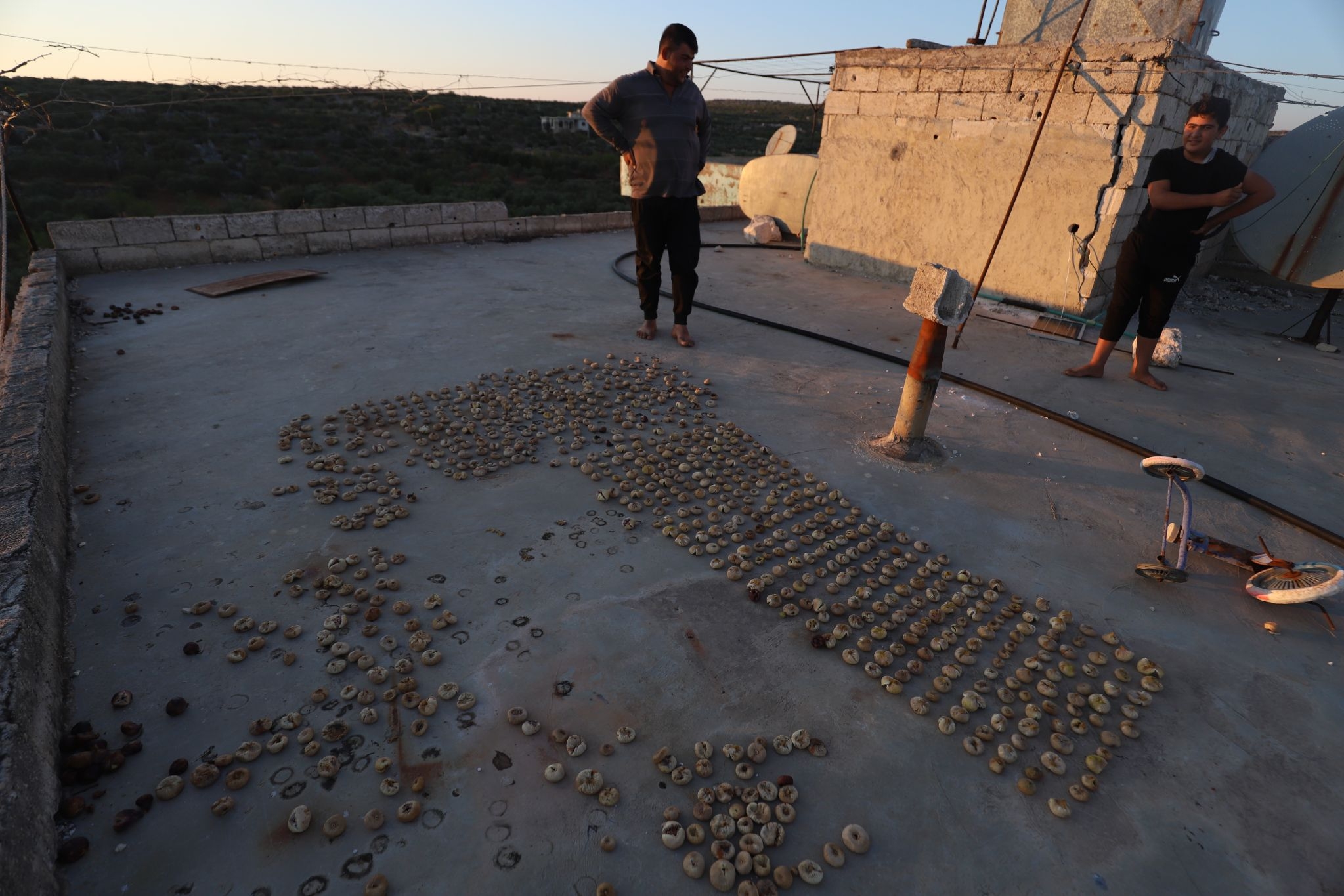
Following the harvest, the crops are laid out on the roof of his home to dry out completely through sun exposure. They are then taken to the market to be sold. “Dry figs fetch a very high price so that's why we only sell our figs after they've been dried. This is our only means of income to help us secure our livelihood for the next year,” al-Zaytoun says. “The price per tonne of dried figs ranges between $2,000 and $2,500.”
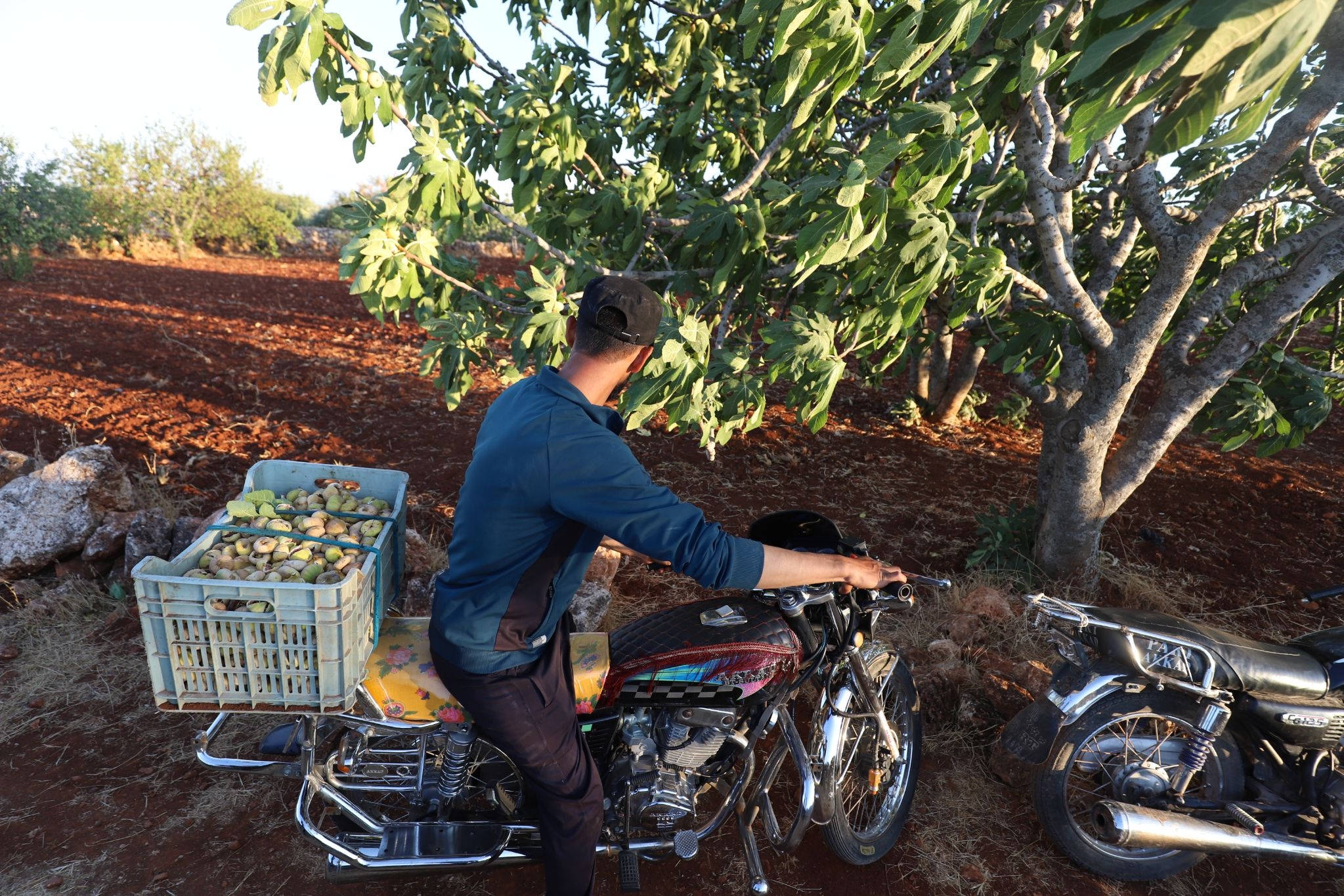
“In the past, our harvest would exceed ten tonnes of dried figs. But the continuous bombing by the Assad regime forces and the recent military operations launched on the area have made it difficult to access agricultural land to care for trees. This year our harvest did not exceed four tonnes.”
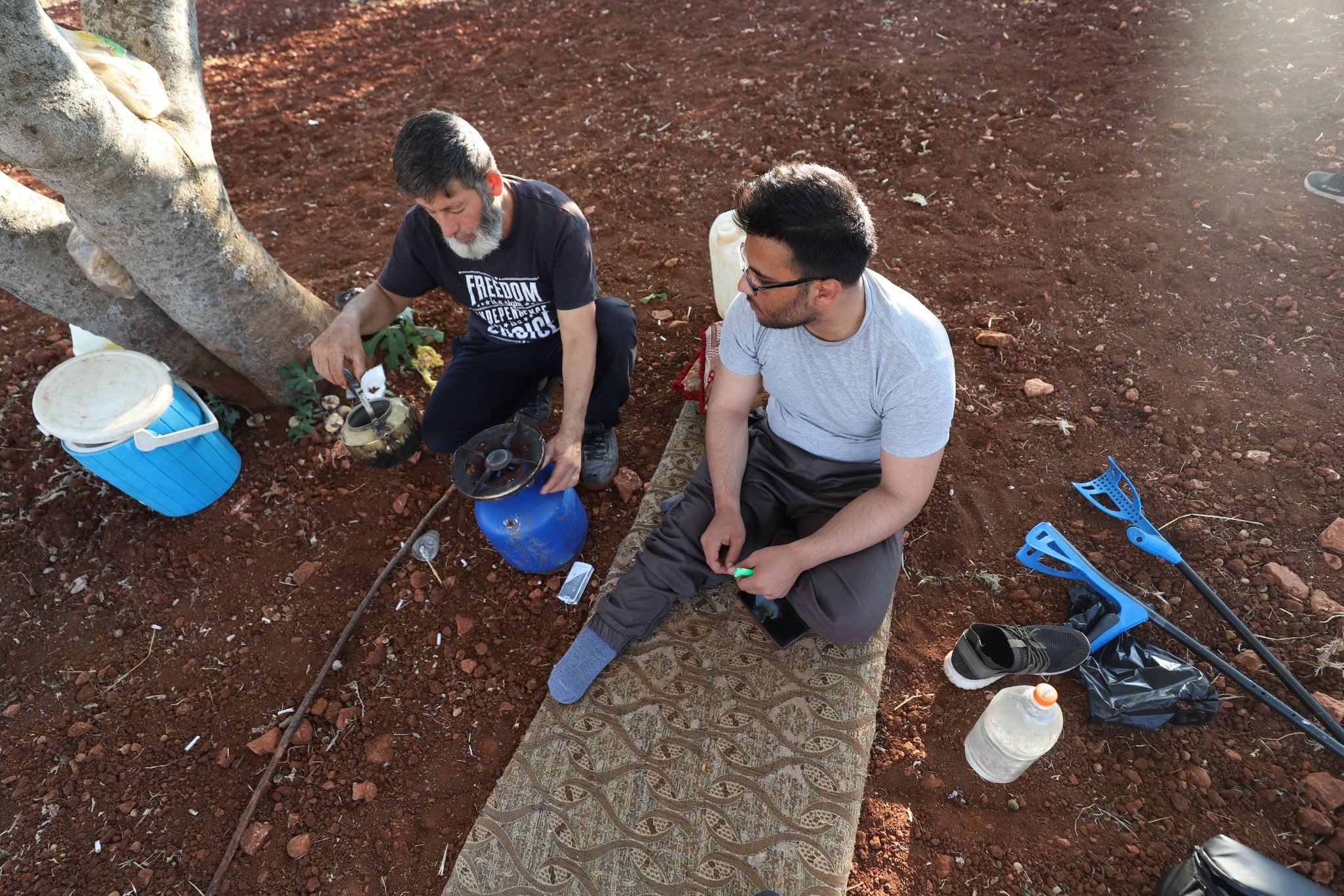
Farmers in the southern countryside of Idlib face great risks while working their land, most notably from artillery and missile shelling by Syrian government forces. This is in addition to the dangers posed by cluster munitions left over from previous attacks. According to the Syrian Civil Defence, two farmers were killed, including a child, and four others wounded from landmines, while they were harvesting their crop in August.
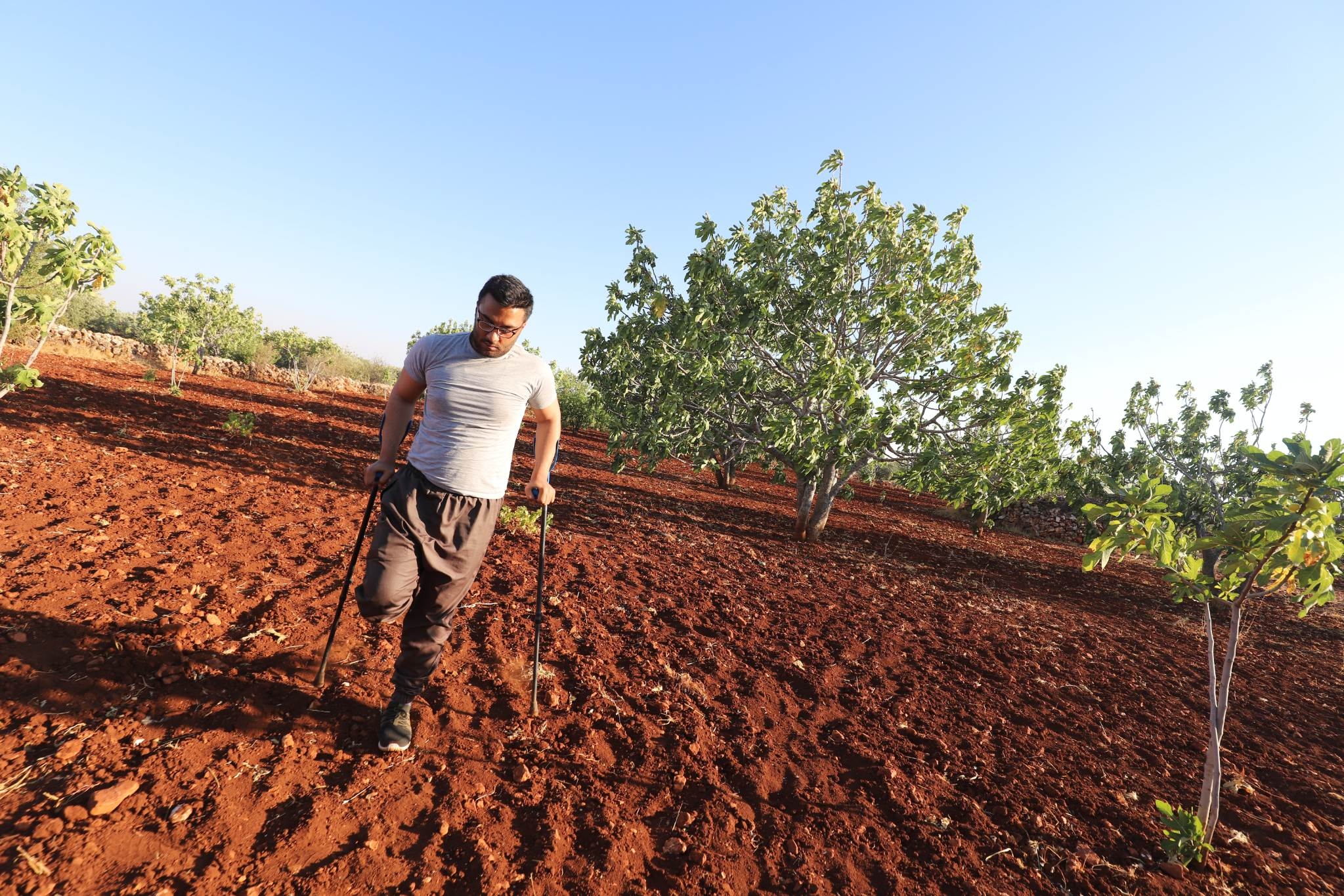
For those who survive, the trauma can take its toll. “When I lost my leg, it took me more than 11 months to move on from the fact that I am disabled,” al-Zaytoun says.
"The Assad regime is constantly trying to besiege us and envelop us in hunger and poverty. But I love life and I'm going to continue to live my life as if I never lost my leg."
Middle East Eye propose une couverture et une analyse indépendantes et incomparables du Moyen-Orient, de l’Afrique du Nord et d’autres régions du monde. Pour en savoir plus sur la reprise de ce contenu et les frais qui s’appliquent, veuillez remplir ce formulaire [en anglais]. Pour en savoir plus sur MEE, cliquez ici [en anglais].


